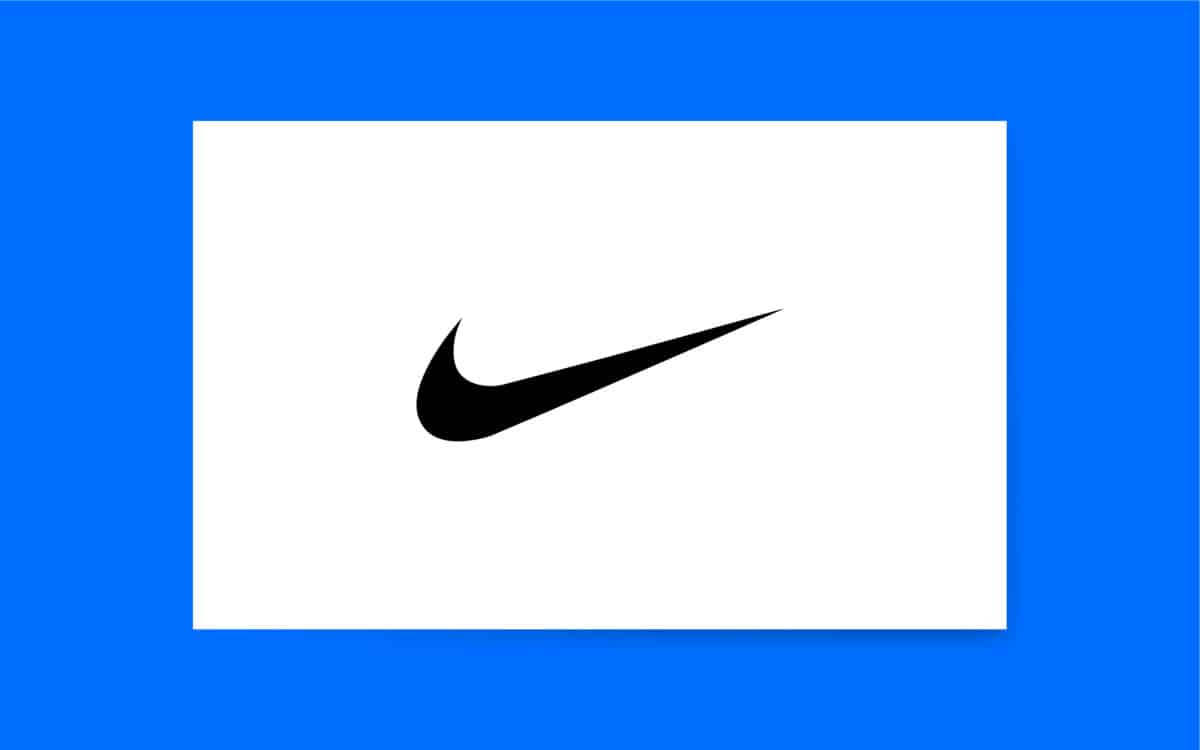How to write a positioning statement: 7 essential steps for your brand

Learning how to write a brand positioning statement is crucial to preparing your business for success. Your brand position identifies which industry you serve, your target customers, and most importantly, why you’re the best solution to their problems.
With a brand positioning statement, you distill all elements that make your company compelling to your target customer into one simple declaration. You highlight your unique value proposition and place in the industry, and define the customer you want to reach.
Used correctly, your brand positioning statement will help to guide your marketing efforts, improve the consistency of your brand, and keep your team members on the same page. You’ll use it when introducing a new product or creating an asset for your brand identity.
Today, we will share everything you know to create a good positioning statement to align your team and boost your brand presence.
What is a brand positioning statement?
So, what is a brand positioning statement?
Simply put, a positioning statement is an internal tool used by brands to explain the unique value they deliver to their target audience. The goal of a positioning statement is to identify how you fulfill a particular need in your industry and deliver a magical experience to customers.
Positioning statements act as a frame of reference for marketing campaigns and branding strategies, as they help to determine how you’re going to appeal to your buyer personas in a specific way.
They clarify a clear vision for your brand and ensure you’re giving your customers the best opportunity to understand your business and what it stands for.
After all, in any industry, there will be competitors you need to fight against to capture customer attention. Your positioning statement ensures you can tell your audience directly why exactly they should choose you over any other company.
What’s the purpose of a brand positioning statement?
Learning how to write a brand positioning statement means discovering how to convey your value proposition to your target audience. Your brand positioning statement will frame your identity, purpose (or brand promise), and the distinguishing features of your services or products.
Writing a brand positioning statement allows you to define the following:
- Who you serve.
- What value or benefits you offer.
- How you deliver a positive difference to competitors.
- Why you created your business.
- How you want to influence the mind of your customers.
Brand positioning vs mission statement and value proposition
When you’re developing your brand strategy, you’ll come up with a number of documents or tools to use alongside your brand guidelines. These internal tools are crucial for keeping your employees on the same page and ensuring you can connect consistently with your audience.
A brand positioning statement is one core tool you’ll need to build your brand, but it’s frequently confused with two other brand assets: a value proposition and a mission statement.
Value proposition vs brand positioning statement
Your brand positioning statement examines the full nature, promise, and mission of your business and how you deliver benefits to your target audience. It includes an insight into your value proposition, but the two concepts aren’t exactly the same.
Your value proposition is the core factor that differentiates you from your competitor. You might focus on delivering a positive experience through amazing customer service, or you may have a product that has unique features or capabilities.
Your brand positioning statement is a more focused statement of how that unique value proposition allows you to serve your customers and address their pain points.
Mission statement vs positioning statement
As part of your positioning strategy, you’ll also look at your “mission statement.” This is essentially an outline of the purpose your business serves in your chosen market.
A good brand mission statement guides every function of your company, helping you to determine what wide range of products you’re going to deliver and how you’re going to reach your customers.
Mission statements are often public-facing and give you a chance to share your promise with your customers. Alternatively, a positioning statement is an internal document. It’s also much broader and is created based on your existing knowledge of your own brand, its core values, and its mission.
The brand positioning journey
Although some companies produce their statements after a quick brainstorming session, you’ll find you can create a much more profound statement with a little extra work. Creating effective brand positioning statements requires something of an internal journey within your company.
If you work with a brand strategist, they’ll tell you to discover the core elements of your brand by examining your identity.
Start by exploring the history and current status of your industry and the market you’re going to be serving. Every industry has its own language and components which can influence your mission statement.
Think about where your company came from and what prompted you to start your organization in the first place. Why did you choose your specific market category? What’s your vision for the organization you’re building?
The brand positioning journey also involves understanding both where you are today, and where you want to go. If your company already exists, listening to your customer’s feedback in reviews, testimonials, and surveys can give you an insight into how they perceive you.
Auditing your brand assets will also help you to define which elements of your brand identity are working.
Once you know where you stand right now, you can begin to think about where you want to be.
In other words, where do you want to stand in the minds of your customers? How do you want people to think about your business? Do you want to be seen as a luxury brand, an innovator delivering the latest technologies, or a friendly partner for your customers?
What are the elements of an effective positioning statement?
The exact strategy you use to position your company and product offering may differ depending on a number of factors. However, there are some core elements that will typically appear in any positioning statement template.
These include:
1. Your target market
Start with the “who” of your brand positioning statement. In other words, who are you trying to reach with your products and services specifically?
Your target audience shouldn’t just be “anyone.” Instead, you should focus on pinpointing the customers most likely to gain something from the main benefit of the products and services you provide.
Creating a customer persona, or a set of personas highlighting the behaviors, demographics, pain points, and goals of your intended audience, is a good way to make sure you know who you’re serving. Once you have an idea of your target audience, you can speak their language.
2. Product positioning
Next, look at what you’re delivering to your customers. Ask yourself exactly what products or services your company provides, and give each one its own elevator pitch. In other words, what are the core benefits of the solutions you’re providing rather than their features.
Imagine how your products are going to change the lives of your audience. Apple took an innovative approach to provide customers in the technology industry with high-quality tools that are easy to use and convenient.
3. Market category
Where are you building your brand? What specific industry or sector does your company serve? A market category can be as broad as something like the “grocery” sector or as niche as “vegan, organic health store.”
An effective positioning statement should help you to define exactly where you’re operating and where your products should fit into your industry.
When you’re researching your market category, it’s also worth paying attention to how the landscape has changed over the years and the trends that are influencing shoppers today. You’ll also need to assess your competition, and what companies in your industry are already offering.
4. Brand identity
How are you delivering a unique experience to your target audience? How have you built your brand in a way that appeals to the customers you want to serve? Your brand identity outlines all of the core elements of your business and what makes it unique in comparison to your competitors.
A good brand identity should outline everything from the visible assets you share with your audience, such as your logo and your marketing campaigns, to the invisible components that guide your business.
Define your company’s core values, mission, and vision as a business. Decide what guides your organization, and ask how you want your customers to perceive you.
How to write a positioning statement: Step by step
Now we come to the fun part, how to write a brand positioning statement.
Ultimately, the best statement examples are short, sweet statements which highlight the main points that make your brand stand out from its competition. However, before you start writing, you may find you need to do a little research. Here are some of the core steps involved in creating a compelling statement for your brand.
Step 1: Examine your industry
To understand where your business stands, you first need to examine the marketplace you’re going to be serving. In other words, get to know your industry. Define what companies in your industry actually do to serve customers and what kind of clients they typically attract.
Define what “operational excellence” looks like for a company in your landscape.
In some industries, the top performing companies aren’t the innovators delivering the latest technologies, but rather the brands who commit to delivering excellent customer services. Know the trends, patterns, and changes in your landscape that are influencing your target audience.
Step 2: Define your target audience
As mentioned above, your target audience is one of the most important parts of your positioning statement. Understanding your customers will ensure you can create the best possible marketing plan for your brand based on your client’s values and pain points.
Use buyer personas to determine who your customers are, what kind of challenges they face, and what they value most when selecting a business. Are your customers driven by the search for high-quality products, lower prices, excellent service, or innovation?
Step 3: Evaluate your competition
Next, it’s time to look at how you can develop a competitive advantage in your industry. Look at the offline and online retailers in your space who serve a similar audience to you. Ask yourself how they position themselves in your industry and what their strengths and weaknesses are.
Look for any “gaps” in the landscape that aren’t being served by other companies. You might find that companies in your food and beverage industry deliver high-quality beverages, but they don’t focus on the needs of people with specific allergies.
Step 4: Know your brand
A good brand positioning statement should distill all of the elements of your core brand identity and the brand value you offer into a simple claim.
Since you should have already established what market category you’re entering by evaluating your industry, focus on outlining the core essence of your company. In other words, what is the promise your brand makes to your customers?
What vision did you come up with when you created your organization? What mission do you want to accomplish with your products or services? What are the unique benefits and values you can deliver to your ideal customers?
Step 5: Establish your point of differentiation
Based on your knowledge of your audience, your competition, and your own brand, you should be able to define at least one thing that sets you apart from everyone else. An effective brand positioning statement should draw full attention to this unique value.
You might be a highly empathetic company that gives something back to a nonprofit organization or group every time you make a sale. You might serve a previously under-represented niche audience or deliver exceptional customer support based on the needs of consumers in your space.
Decide what’s going to separate you from your competitors.
Step 6: Bring it all together
Now it’s time to combine everything you’ve learned from your research into just a couple of sentences. Don’t worry if your brand positioning statement doesn’t sound perfect straight away. You can always clarify and refine it later.
Essentially, your statement should be something like: “For [target audience], [brand name] delivers [unique selling point] within [market category] better than [competition] because of [proof].”
Share your creative asset with your colleagues to determine whether anything needs to be added, clarified, or removed before you start rolling it out to your marketing team.
Step 7: Consistently optimize
Finally, keep a close eye on how your brand positioning statement actually works for your business. Does your statement align with your business values? Does it accurately represent how customers feel about you and where you stand in your industry?
Keep in mind as your business grows and the needs of your customers evolve, you may find you need to update or optimize your brand positioning statement over time. While you shouldn’t constantly change your position, you can make updates based on what you learn from your industry.
Positioning statement template
If you’re struggling to figure out how to write a brand positioning statement based on the steps above, you can use the following template to guide you. Keep in mind each business is unique, so your statement may not match the following template exactly.
However, the best positioning statements will always include a description of your target market, what differentiates you from the competitors, and a reason why your business is the best.
Template:
For [target market] who [needs of market/goals/pain points], [brand name] provides [main benefit or unique value proposition] with a focus on [brand values]. We achieve this through [proof of the benefit you deliver].
Tips for a good brand positioning statement
The guidelines above should ensure you can write a brand positioning statement that highlights how you serve the needs of consumers in your industry effectively. However, there are a few additional tips you can use to ensure your statement elicits the right emotional response and business outcomes. You should always:
Be concise
Get straight to the point with your positioning statement. Most of the time, a position statement will only be one or two sentences. You should definitely avoid going over four sentences at the very most, as this can lead to increased complexity.
Be memorable
Make your statement unique to the company you’re creating and the problems you aim to solve. Emphasize the distinctive qualities of your brand and why your customers should choose you over anyone else.
Showcase your brand
Don’t just outline your customers and what problems you want to solve. Highlight what makes your brand unique and what drives your company. Adding your core values to your mission statement will help to keep team members aligned.
Provide proof
Rather than outlining what your company aims to do and leaving it at that, introduce how you deliver on your promise. For example, “We deliver excellent customer service by working hand-in-hand with every client on a bespoke product.”
Keep it simple
Don’t be overwhelming, complex, or convoluted with your mission statement. Avoid complex language and jargon, and stick to simple sentences. This will ensure your internal teams aren’t confused by your statement.
Positioning statement examples: The best positioning statements
By this point, you should hopefully be in a pretty good place to start working on your positioning statement. However, it can be helpful to take a closer look at how some other companies implement the best practices of writing a position statement into their brand strategies.
Here are some great positioning statement examples to inspire business owners.
1. Coca-Cola
For good examples of positioning statements, you can’t go wrong with Coca-Cola. Coca-Cola’s positioning statement revolves around highlighting the positive experience they want to deliver to its target audience. The company focuses on the emotional connection it makes with customers:
“For individuals looking for high-quality beverages, Coca-Cola offers a wide range of the most refreshing options — each creates a positive experience for customers when they enjoy a Coca-Cola brand drink. Unlike other beverage options, Coca-Cola products inspire happiness and make a positive difference in customers’ lives, and the brand is intensely focused on the needs of consumers and customers.”
2. Amazon
Amazon keeps things simple and concise with its positioning statement – as all companies should. It outlines how it wants to be the one-stop shop for its customers in search of a range of different solutions. Most importantly, it defines what makes its company different:
“For consumers who want to purchase a wide range of products online with quick delivery, Amazon provides a one-stop online shopping site. Amazon sets itself apart from other online retailers with its customer obsession, passion for innovation, and commitment to operational excellence.”
3. Nike
Nike is one of the best examples of a company with a compelling brand positioning statement. The company clearly outlines how its products are designed to serve athletes of all kinds, with high-quality materials and a focus on innovation:
“For athletes in need of high-quality, fashionable athletic wear, Nike provides customers with top-performing sports apparel and shoes made of the highest quality materials. Its products are the most advanced in the athletic apparel industry because of Nike’s commitment to innovation and investment in the latest technologies.”
Don’t underestimate your brand positioning statement
Learning how to write a brand positioning statement is an excellent way to ensure you can keep your team on the same page about how you plan to serve your audience and differentiate your brand.
With a positioning statement, you distill everything that makes your company special and impactful into a simple declaration your internal teams can understand.
A position statement will help you to highlight your brand persona in the most effective way possible, showcasing the functional benefits of your offering to the right people. What’s more, it can help guide your marketing strategies, so you can stay one step ahead of the competition.
If you’re struggling to build a brand positioning statement for your forward-thinking company, you can find plenty of guidance on the Fabrik blog about refining your brand’s identity.
Alternatively, you can avoid spending countless hours producing brand assets by working directly with the Fabrik team. Contact us today to learn how we can help you develop a strong brand.
Fabrik: A branding agency for our times.


























